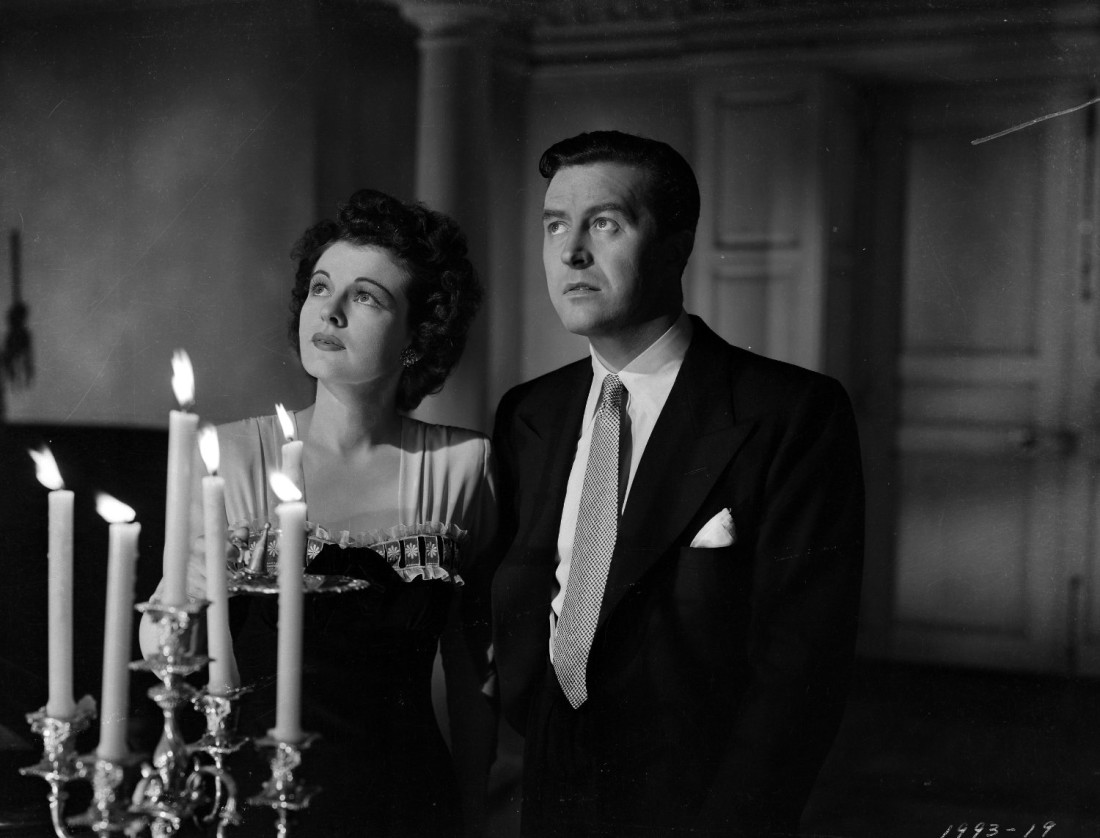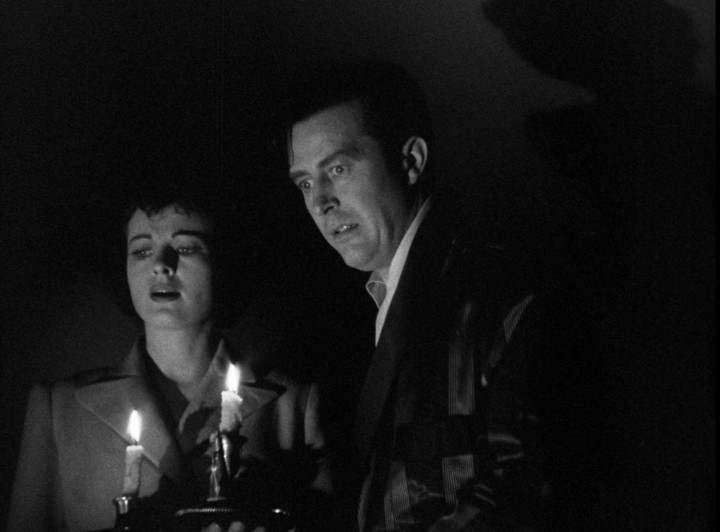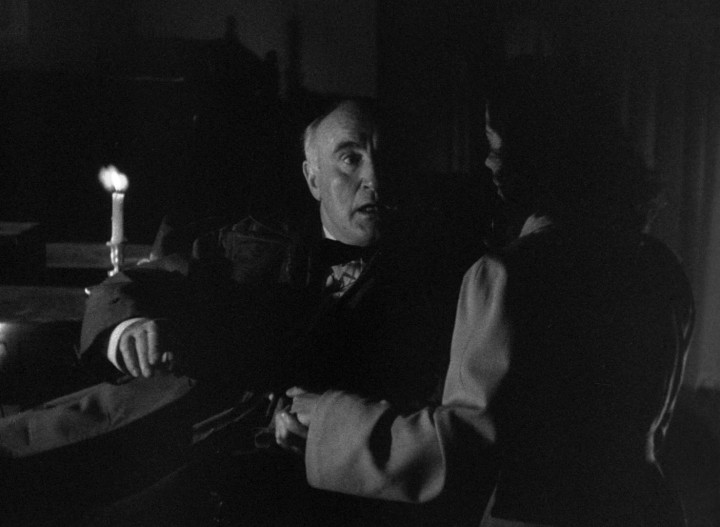One of the most striking things — and there are several — about The Uninvited is that it makes no bones about what it is. It tells you right from the onset — via Roderick Fitzgerald’s (Milland) narration — that this is a ghost pure and simple. It’s not that the film is in any great hurry to get down the scares — the development is carefully measured — but you immediately know what you’re getting into — a haunted house. And it’s a carefully detailed (though not inherently creepy) haunted house, perched on a cliff on the Cornish coast. The film opens with Roderick and his sister Pamela (Hussey) coming across the deserted mansion by accident, and then going inside when their dog chases a squirrel through an open window. Almost at once they decide to buy it (it helps that they seem to have a houseful of inherited furniture at their disposal), and this proves fairly easy, since the house has a “history.” There are no prizes for guessing this history is of the supernatural sort.
Just why Paramount opted to make The Uninvited — based fairly closely on the novel Uneasy Freehold by Dorothy Macardle — at this time isn’t entirely clear. At the time, horror pictures were B pictures — the Universal horrors running on the fumes of the glory years — or lower. Critically, the taste in horror leaned toward the Val Lewton B pictures being made at RKO — and those were more concerned with atmosphere than the supernatural. Hollywood was even then not known for taking a risk, so the existence of The Uninvited is something of a mystery — one that is equaled by the fact that, despite its success, it spawned no further attempts at a ghost story. As noted, its sort of follow-up — also from the otherwise uninteresting Lewis Allen — The Unseen sells its shudders very short by being nothing more than a mystery, an even greater pity since it starts out promisingly. What we have here is a strangely solitary movie.
However, this a pretty terrific solitary movie. It’s a beautifully crafted work that suggests more than it shows — though it isn’t afraid to show its ghosts — and works as much on a clever, often witty, screenplay, atmosphere, and performances as on shocks. The shocks in fact are often little more than momentary frissons — like a bit (unseen by the protagonists) where a bouquet of flowers wilts in the presence of the evil spirit. The film carefully builds its thrills — to a point where the story’s revelations are often more startling than the ghost business. It’s also a surprisingly adult film. Within the confines of a pretty regressive censorship, The Uninvited manages to get away with adultery, illegitimacy, and even (barely) repressed lesbianism — no mean feat in 1944.
I should note, however, that the film is too tame for some. When I wrote about the movie at some length for a series on Paramount horror movies for Scarlet Street magazine, exploitation horror movie prouducer Richard Gordon (Fiend Without a Face) wrote a letter to the magazine, generally praising the article, noting that I had convinced him to give The Uninivited another look. However, that new look didn’t change a thing — he still didn’t like the movie. You win some, you lose some.








On the other hand, “The Uninvited” is one of the great cinematic pleasures/treasures of the 1940s. It is singularly what it is and in competition with no other film. Apart from the splendid performances (including a stunning debut for Gail Russell), superb production values, there is a beautiful Victor Young score featuring the theme that became the song “Stella By Starlight”. Stella is the name of Russell’s character. This film is available on Blu ray from Criterion.
Just because I put it in context of its era was not meant to denigrate it on its own merits.
I didn’t take your comments to mean anything negative. You rated it highly. I just added some thoughts, I thought….
I was merely clarifying my fondness for the film.
It is strange that it didn’t jump-start the serious ghost story sub genre, yet there soon followed a few light-hearted/comedic ghost films: THE CANTERVILLE GHOST (same year; before or after?), BLYTHE SPIRIT, THE TIME OF THEIR LIVES, and THE GHOST AND MRS. MUIR. And then, on the other hand, the serious yet not supernatural THE SPIRAL STAIRCASE also followed soon after.
Nice review. One of my favorite films and the best ghost story ever. A woman crying in the middle of the night coming from nowhere. The mysterious scent of mimosa. Beautiful cinematography and the great “Stella By Starlight” that years later became a jazz classic. And just a touch of suppressed lesbianism thrown in just to tease the sensors. A rather sinister but brilliant film!